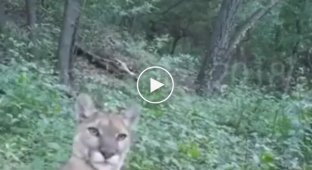Small cats. Puma and interesting facts about it (10 photos + 1 video)
The puma, or cougar, or mountain lion, is one of the most widespread predators of the New World. It is a large mammal of the cat family (Felidae), living from southern Canada to the southern regions of South America. Initially, pumas were found almost everywhere from southern Patagonia to southeastern Alaska; the area of its distribution coincided quite closely with the range of its main prey - various deer. 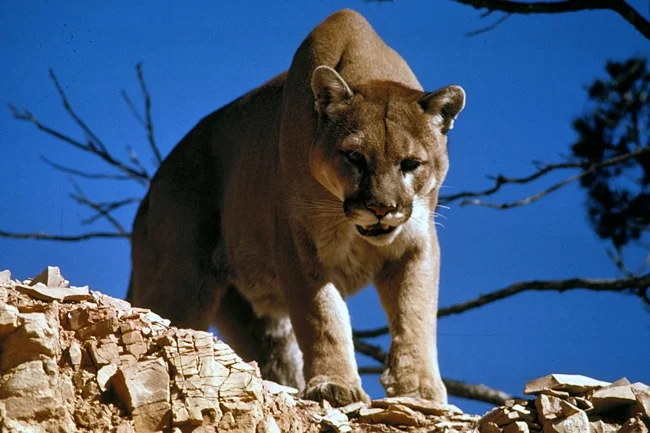
A LITTLE BIOLOGY:
The puma is the fourth largest cat in the world and the second largest in America; only the tiger, lion, and jaguar are larger. The puma is a graceful, strong animal with an elongated body, long powerful legs, and a flexible tail that reaches almost a third of its body length. The average body length of an adult is from 1 to 1.8 meters, and its weight is from 30 to 100 kg, depending on gender and region. Males are usually larger than females.
The paws are wide, with sharp, curved retractable claws; the hind paws have 4 toes, the front paws have 5. The retractable claws are used to grab and hold prey, and to climb trees. The pads of the toes are oval, with three distinct lobes on the heel pad - a common feature for all cats. 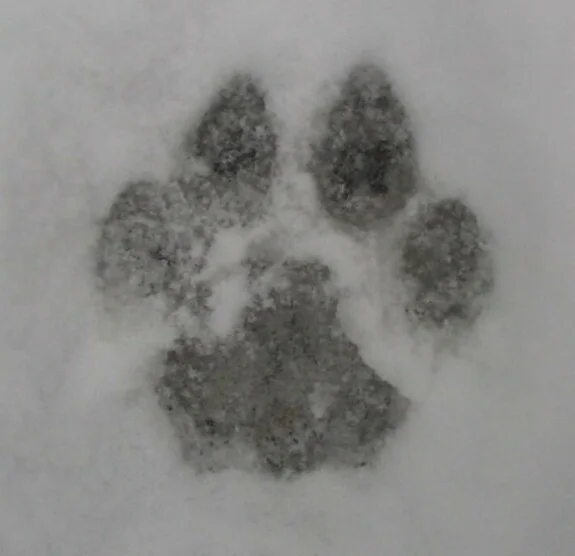
The fur is uniform, without spots or stripes. The color varies from reddish-brown to grayish-yellow, sometimes with a lighter belly and chest. The cubs retain a spotted camouflage pattern for up to several months, which helps them hide from predators.
The puma is one of the most widespread wild cats in the world. Its range covers almost all of America: from the forests of Canada and the USA to the Andes of South America and Patagonia. It lives in a variety of biotopes - from mountain forests and tropical jungles to deserts and steppes.
Despite such ecological plasticity, the puma avoids open spaces without shelter and prefers areas with dense vegetation or rocky terrain. Also in South America, pumas try to avoid swampy areas and lowlands, which are favored by jaguars. These animals are perfectly adapted to life in rough terrain. Thus, thanks to muscular limbs, they are able to make jumps up to 6 m long and up to 2.5 m high, run at speeds of up to 50 km/ h (albeit over short distances). The puma easily moves along mountain slopes, climbs trees and rocks well, and swims well if necessary.
Pumas are solitary and territorial predators. They are active mainly at dusk and at night. They spend most of their time alone, meeting with other individuals only during the mating season. 
Their population density, depending on the availability of game, varies from one individual per 85 square kilometers to 13 individuals per 54 square kilometers. The female puma's hunting area is from 26 to 350 square kilometers and is usually located on the outskirts of the male's territory. The males' areas are from 140 to 760 square kilometers and never overlap.
The puma is a secretive ambush hunter. Its diet consists mainly of ungulates - deer, guanacos, alpacas, and sometimes livestock. Small mammals, birds, and even insects can also be included in the menu, especially in the more southern parts of its range. When hunting, the puma usually uses the element of surprise - it sneaks up on large prey, then jumps on its back from a close distance and uses its body weight to break its neck, or, like all other cats, grabs its throat with its teeth and begins to strangle. One puma consumes 860-1300 kg of meat per year, that is, about 48 ungulates. Cougars hide uneaten meat by dragging it away and covering it with leaves, brushwood, or snow. They return to the hidden prey, sometimes repeatedly. A cougar is capable of dragging a carcass five to seven times its weight over a considerable distance. 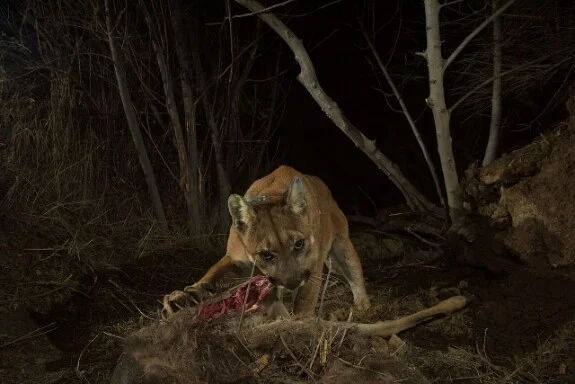
After a successful hunt, a cougar often hides the carcass and returns to it within a few days, feeding on the remains.
The mating season can occur at any time of year, but most often in late winter and spring. Pregnancy lasts about 90–96 days. The female gives birth to 1 to 4 kittens in a secluded place. The mother takes care of her offspring for up to one and a half years, teaching the young hunting skills. During this time, they can follow her for long distances. The infant mortality rate is high - up to 50%.
Because of their secrecy, pumas rarely come into contact with humans. However, conflicts arise, especially in areas where the predator attacks livestock. This causes a negative attitude and often leads to the shooting of animals.
Despite its vast range, the puma is endangered in some regions. The main threats are habitat loss, poaching, and population fragmentation. A number of countries have programs to protect the species, including the creation of migration corridors and the protection of natural habitats.
INTERESTING FACTS:
- As strange as it may seem, despite its size and weight, the puma is the largest representative of small cats. One of the distinguishing features is that large cats, unlike small cats, can growl. All cats can purr, but large cats only when exhaling, and small cats - both when inhaling and exhaling. 
- The condition of the teeth is one of the main indicators in determining the age of a cat. Milk teeth in cougars are completely cut by 4 months of age. Permanent teeth begin to cut by 6-8 months, and by the age of 1.5-2 years they are completely cut. With age, the canines and incisors are heavily ground down and darken.
- Along with the jaguarundi, cougars are the only American cats that are uniformly colored; hence the scientific name of this species, concolor, which is translated from Latin as "one-colored". In adult cougars, the color is grayish-brown or brownish-yellow; the underside of the body is lighter than the top. In general, the coloring of pumas resembles the coloring of their main prey, deer.
- The coloring of puma cubs differs from the coloring of adults. Their fur is thicker, covered with dark spots, stripes on the front and back limbs, and rings on the tails. The spots on the fur begin to fade after 9 months of life, and completely disappear by two years. 
- Albino and melanistic pumas are unknown in nature.
- Currently, the range of the puma extends over 100 degrees of latitude - from the Yukon (Canada) and south, covering almost all of South America up to Patagonia.
- The Florida cougar is the rarest subspecies of cougar. Its population in the wild in 2011 was just over 160 individuals. The Florida cougar is distinguished by its relatively small size and high paws. Its fur is dark, reddish. As a result of inbreeding, individuals of this subspecies have acquired a curved tail tip. 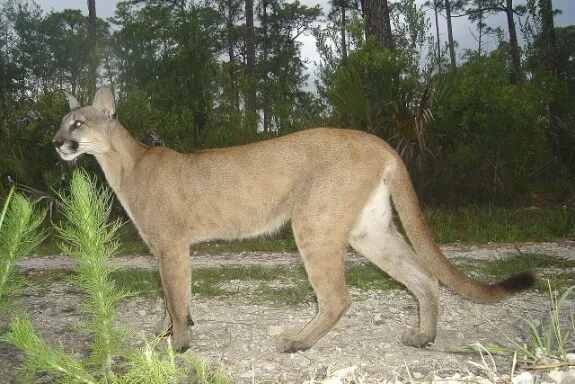
- Contrary to popular belief, the cougar is a rather quiet animal. It makes loud cries, similar to human screams, only during the mating season.
- The puma has no natural enemies, but other predators can pose some danger to the puma: jaguars, wolf packs, grizzlies, black bears, crocodiles, black caimans and large Mississippi alligators. Grizzlies and black bears act as freeloaders for the puma, taking away some of the prey.
- Unlike many large cats, pumas rarely attack humans, preferring to avoid them. From 1890 to January 2004, about a hundred attacks were recorded in the United States and Canada. Most of the victims were children or people of short stature, and the attacks occurred at dusk or at night.
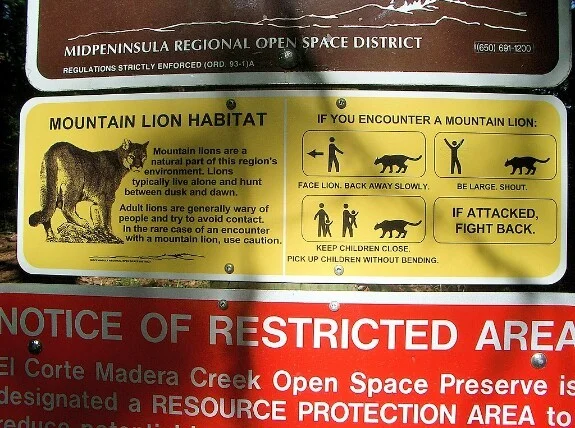
- Although the puma is not closely related to the big cats, hybrids of pumas with leopards (pumapards) and ocelots have been produced. Hybrids of pumas with jaguars have also been reported.

- Due to the huge number of names: more than 40 in English, 18 in the languages of the peoples of South America and 25 in the languages of the peoples of North America, the puma got into the Guinness Book of Records as the animal with the largest number of names. .
- In the wild, the puma lives 10-13 years (the life expectancy of females is longer than that of males), in zoos - up to 20.
- Where pumas hunt ungulates (for example, deer), the number of accidents with animals decreases and even the spread of ticks decreases - because there are fewer white-tailed deer that carry them.
- Cougars hide uneaten meat by dragging it away and covering it with leaves, brushwood or snow. Indian tribes living in southern California took advantage of this habit of cougars, picking up eaten or completely untouched carcasses.
- "Puma" is a famous German company producing sportswear, footwear and equipment. Founded in 1948 by Rudolf Dassler, brother of Adolf Dassler














